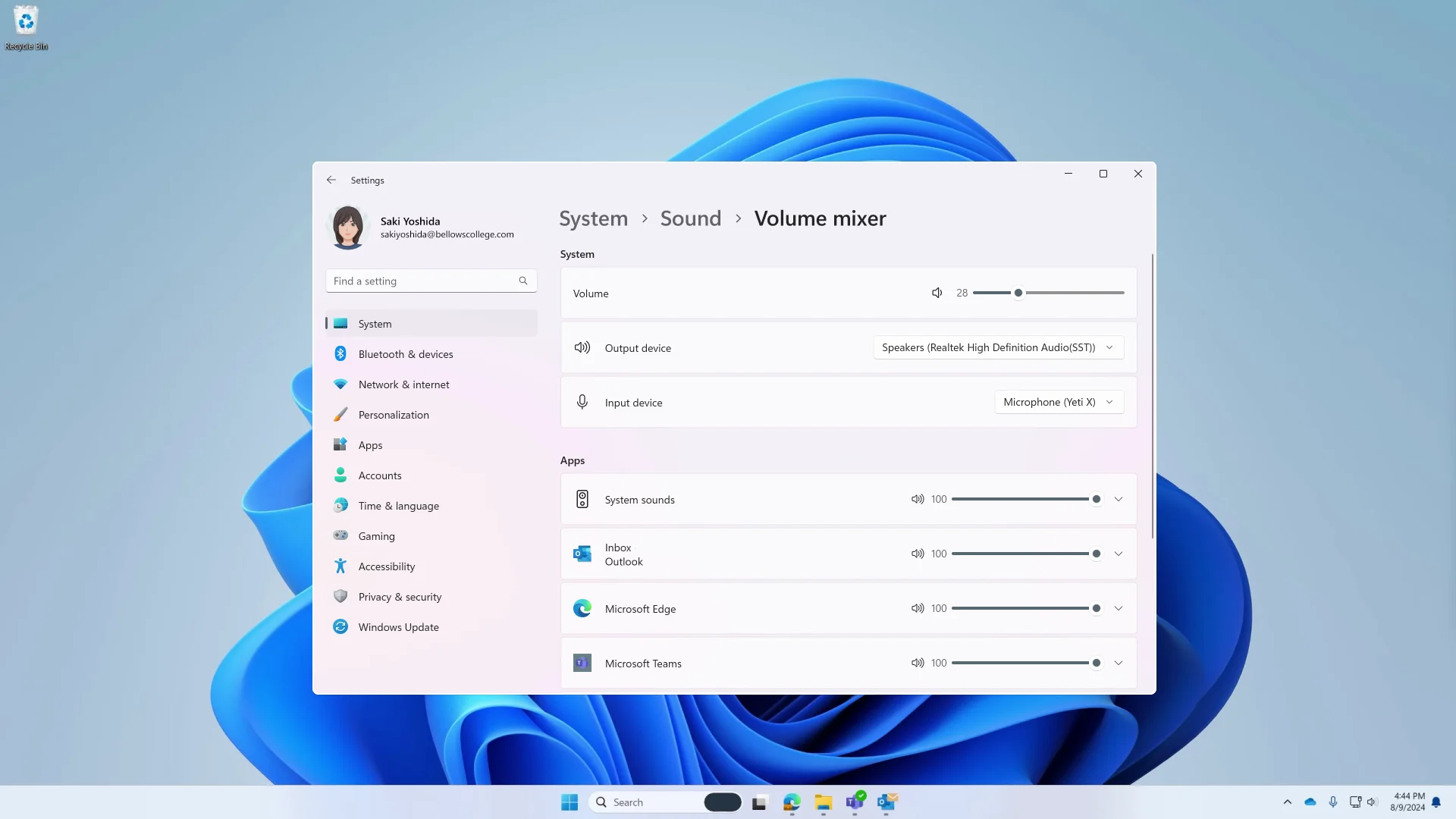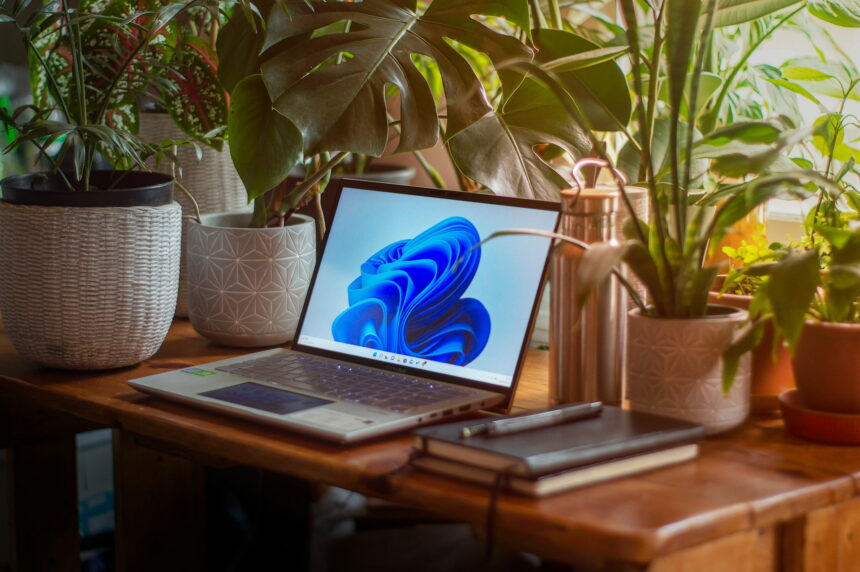Microsoft has rolled out the August cumulative update, KB5041585, for Windows 11. This update introduces new features and addresses various bugs and security issues.
Windows 11 Update KB5041585: What’s new and improved
One of the key additions is a volume mixer, accessible from Settings, which allows you to manage the volume of individual applications independently of the system’s overall volume. The volume mixer lets you select the speaker or headset used for playback and change the recording device.

This update also brings several new features, including:
- The ability to drag apps pinned to the Start menu onto the taskbar.
- The option to duplicate File Explorer tabs with ease.
- A new keyboard shortcut, Windows + T, for quickly navigating between open applications.
- Performance improvements in File Explorer.
Fixes and improvements
Like every monthly update, this update fixes multiple problems in the following Windows components:
- (Bluetooth) You cannot put calls on hold from Bluetooth peripherals.
- (FrameShutdownDelay) The browser ignores its value in the registry key «HKLM\SOFTWARE\Microsoft\Internet Explorer\Main».
- (Windows Server vNext) The cache size display behavior in the latest build is not as expected.
- (Group Policy Preferences Item-Level Identification (ILT) and Local Users and Groups) You cannot choose a group from the target domain for ILT. Additionally, you cannot choose a Local Users and Groups account. The forest does not appear. This issue occurs when you deploy multiple forests and the target domain has a one-way trust with the administrator’s domain. This issue affects Enhanced Security Management Environment (ESAE), Protected Forests (HF), or Privileged Access Management (PAM) deployments.
- (Transmission Control Protocol/Internet Protocol (TCPIP)) The issue causes high CPU usage and packet loss. It also affects TCP connection success rates.
- (NetAdapterCx module) A system becomes unresponsive when large amounts of data are transferred over Wi-Fi. This issue occurs on devices that have certain wireless network cards.
- (Universal Print Clients) They do not communicate with the Universal Print Service. This affects printing functions. This issue occurs when you enable Web Proxy Auto Detection (WPAD).
- (Printing Support Application) When using the application with a USB device, the application stops responding and does not print. This issue also limits the user interface functions.
- (Autopilot) An error occurs when using it to provision Surface Laptop SE devices.
- (Windows Defender Application Control (WDAC))
- A memory leak occurs that could deplete system memory over time. This issue occurs when provisioning a device.
- When applying WDAC Application ID policies, some applications may experience errors.
- (Windows kernel vulnerable driver block list file (DriverSiPolicy.p7b)) This update adds to the list of drivers that are at risk from Bring Your Own Vulnerable Driver (BYOVD) attacks.
- (Windows Backup) Sometimes a backup fails. This occurs when a device has an Extensible Firmware Interface (EFI) system partition (ESP).
- (Cache Manager) It may become unresponsive. This occurs when using Hyperthreading on Windows Server 2022.
- (Windows Update Agent API (WUA) (known issue)) You may get an empty result when querying object properties IUpdate in IUpdateCollection for Windows updates. You may also get error code 0x8002802B (TYPE_E_ELEMENTNOTFOUND). This occurs when calling methods on the object from a script (PowerShell, VBScript, etc.).
- (Windows Enterprise Subscription (Known Issue)) When upgrading from Windows Professional, the upgrade may fail. In Task Scheduler, a message appears for the LicenseAcquisition scheduled task. The message is “Access is denied (error code 0x80070005).”
- (BitLocker (known issue)) A BitLocker recovery screen will appear when you start using your device. This happens after you install the July 9, 2024 Update. This issue is more likely to occur if device encryption is turned on. Go to Settings > Privacy & security > Device Encryption. Windows may ask you to enter your Microsoft account recovery key to unlock your drive.
- (Lock screen) This update fixes issue CVE-2024-38143. Because of this, the “Use my Windows user account” checkbox is not available on the lock screen to connect to Wi-Fi.
- (NetJoinLegacyAccountReuse) This update removes this registry key. For more information, see KB5020276-Netjoin: Domain join hardening changes.
- (Secure Boot Advanced Targeting (SBAT) and Linux Extensible Firmware Interface (EFI)). This update applies SBAT to Windows systems. This prevents the vulnerable Linux EFI (Shim bootloaders) from running. This SBAT update will not apply to systems that dual-boot Windows and Linux. After applying the SBAT update, older Linux ISO images may not boot. In this case, please get in touch with your Linux vendor for an updated ISO image.





